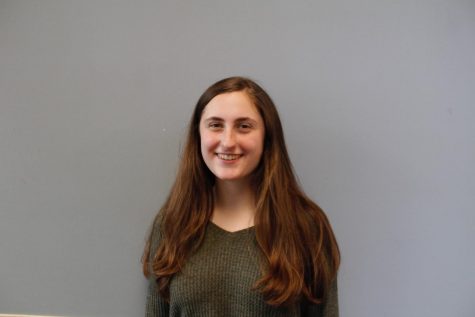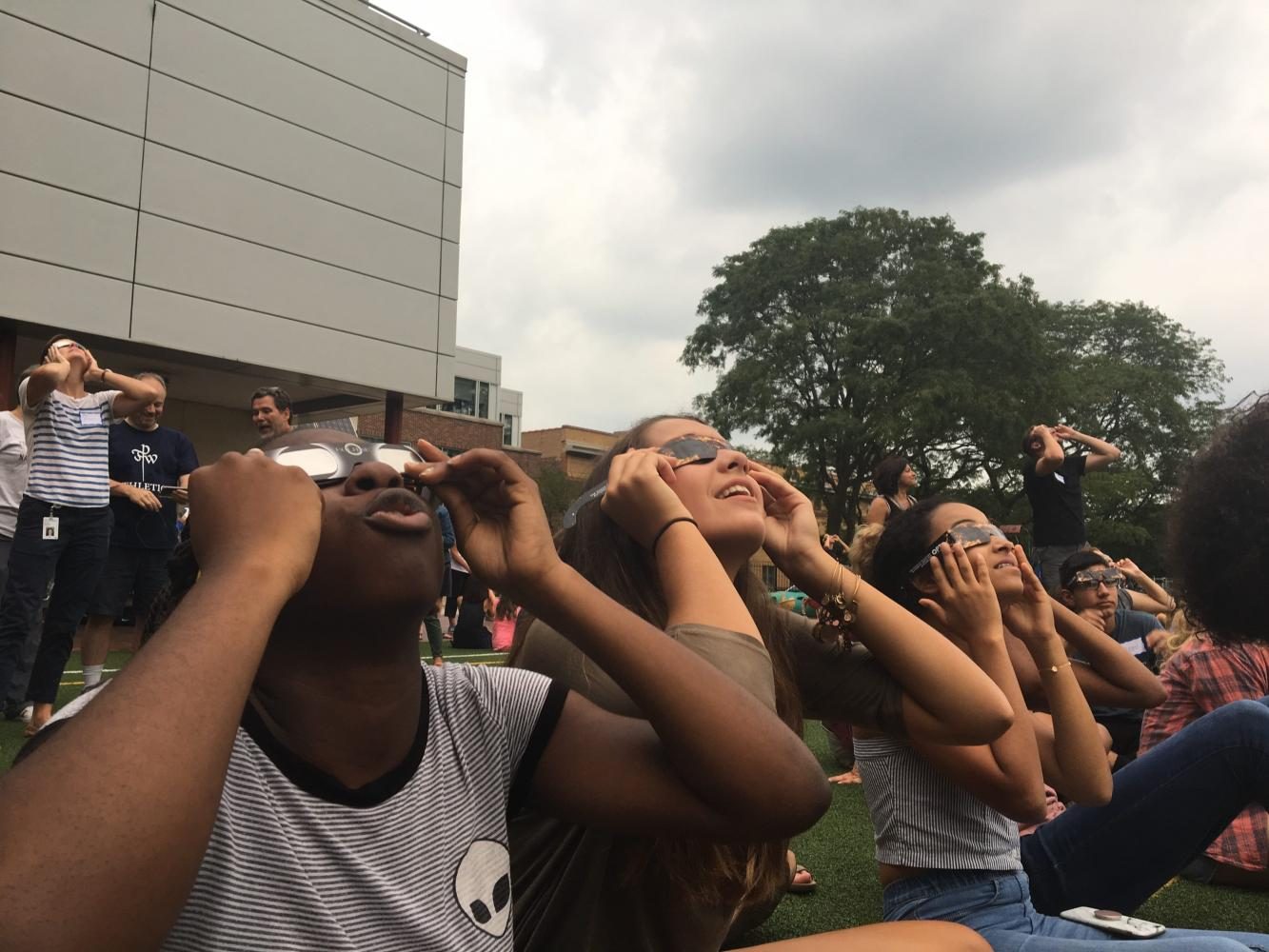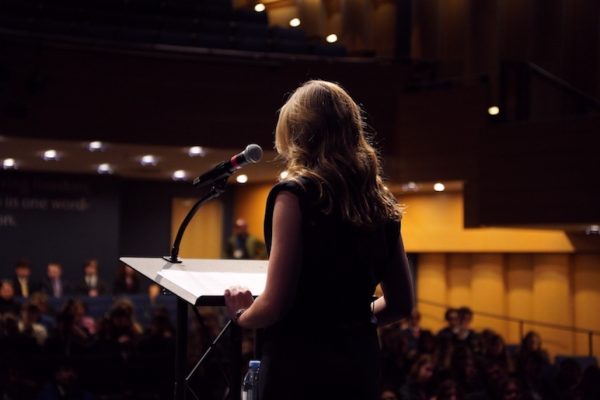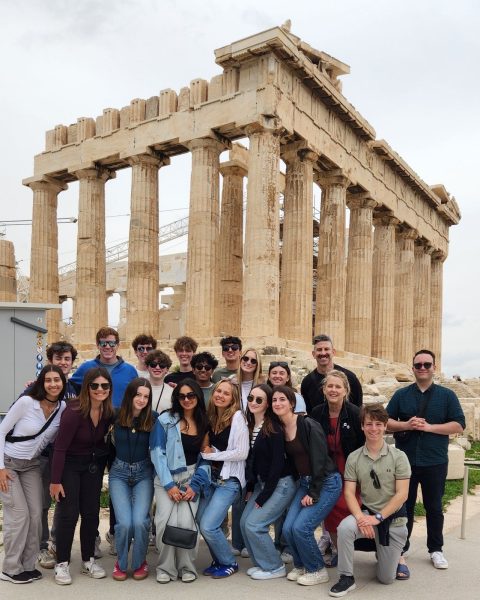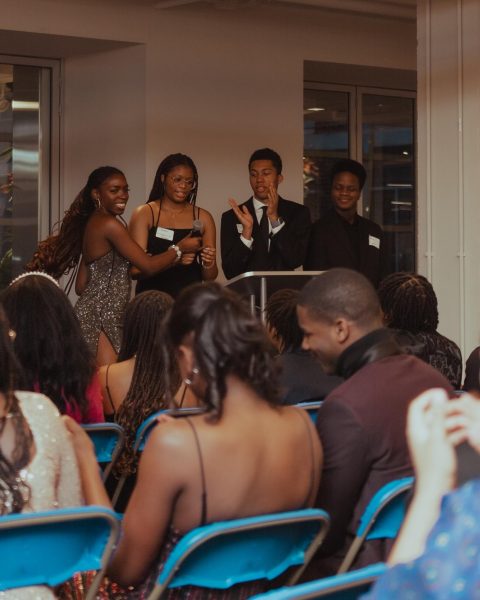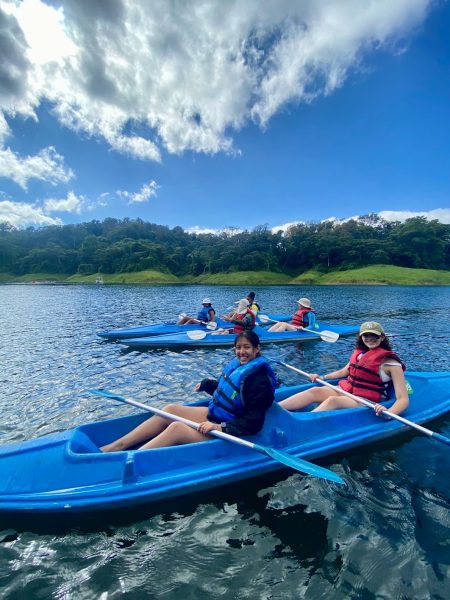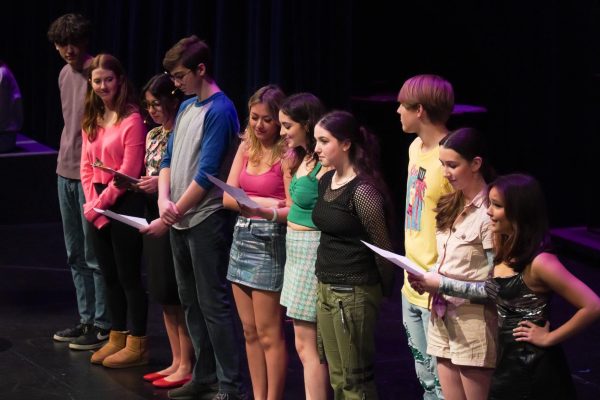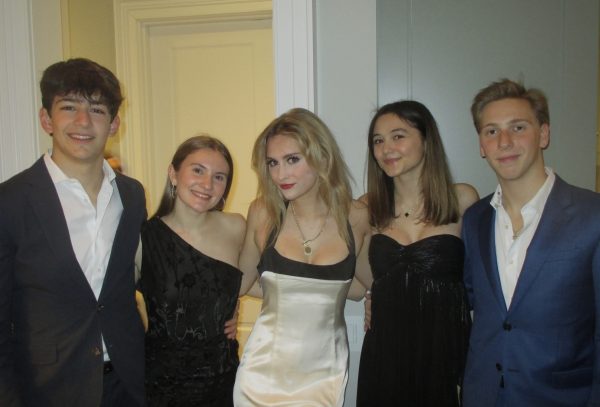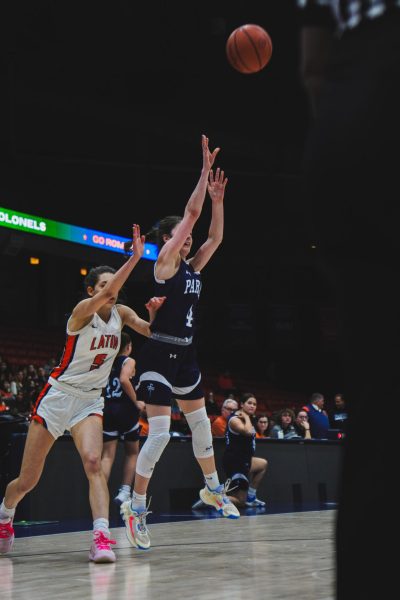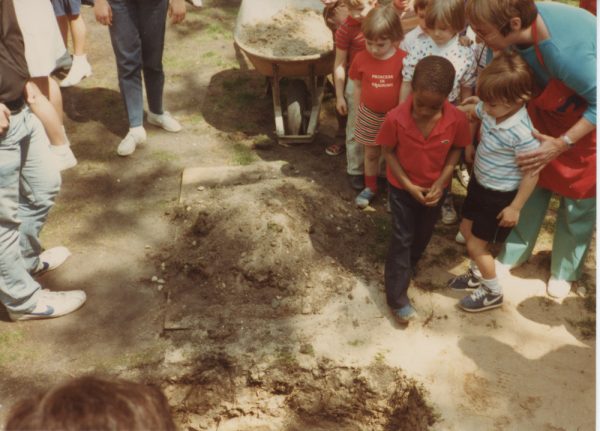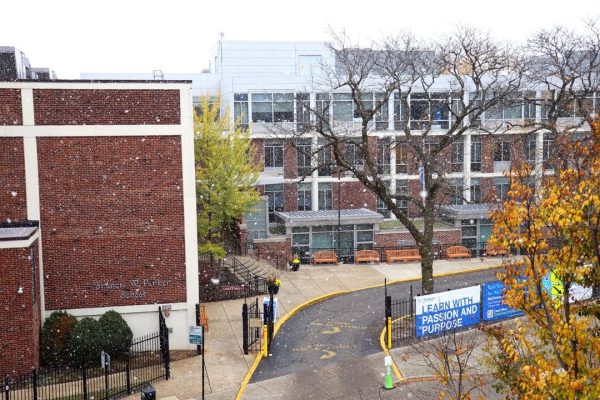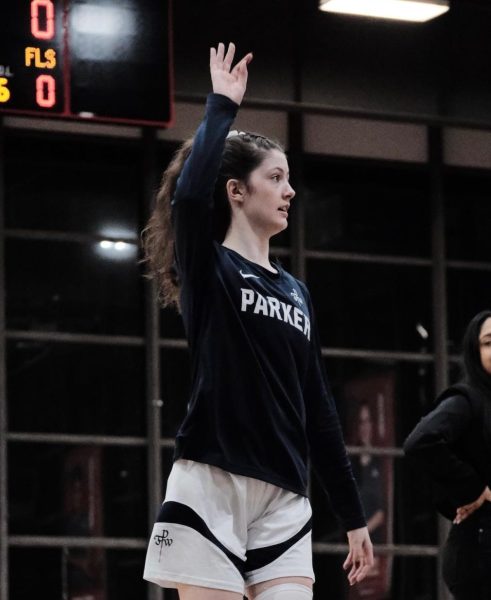Fun Without the Sun
Parker Community Observes Rare Solar Eclipse
Photo credit: Molly Taylor
Students at teachers at Parker watch the eclipse at 1:18pm as it enters its peak viewing time.
Administrators and teachers put their preparation for the upcoming school year on hold. Middle school athletes took a break from their first preseason practices. Upper school Bridge Program participants paused their activities. On August 21 around 1 p.m., about 40 members of the Parker community congregated on the turf field to watch the first solar eclipse to be seen from the contiguous United States since 1979.
Around 1:20 p.m., the peak time for the eclipse, many conversations ceased as students and adults put on their eclipse-viewing glasses, which were provided by Parker, and directed their eyes towards the sky. Despite the overcast weather, the eclipse was visible through the clouds, providing a show for the viewers on campus. A number of science teachers were present and available to answer students’ questions.
“There are so many opportunities for informal science education all over the city, and it’s great to have that opportunity brought here to Parker,” Science Department Co-Chair Elizabeth Druger said. “Parker’s about community, and I think this is just another way to bring in that community experience.”
Junior Annette Njei is grateful that she had the chance to watch the eclipse at school. “I’ve never gotten to see an eclipse in person before, so I think it’s really amazing that Parker enabled us to sit down on their field and witness this great moment in history,” Njei said. “I’m pretty excited.”
From Chicago, viewers saw a partial eclipse, with the moon blocking 87 percent of the sun’s surface. Some students and faculty, however, travelled to locations within the “path of totality,” where they would see the sun fully covered. The path, which was about 70 miles wide and stretched from coast to coast, ran from the Northwest to the Southeast of the United States through 14 states, Oregon being the first and South Carolina the last.
On the morning of the eclipse, upper school science teacher George Austin and four other family friends woke up at 3 a.m. to drive to Hopkinsville, Kentucky, an ideal spot because of its clear weather forecast and long totality duration of two minutes and 40 seconds. While on the road, they got stuck in heavy traffic primarily caused by the eclipse rush. The group didn’t make it to Hopkinsville, but instead they pulled off the highway in Nortonville, Kentucky to witness slightly over two minutes of totality.
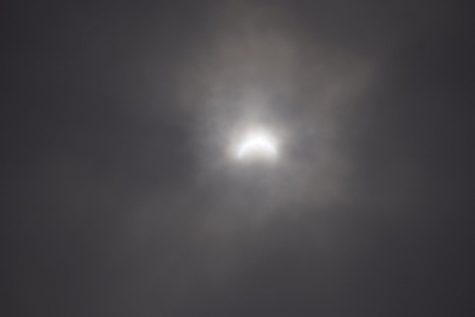
“During the last moments before totality, we could see the light of the sun dimming and then turning into a thin thread of reddish light and then go out so that we couldn’t see anything at all,” Austin said. “Then we took off our glasses and saw the total eclipse directly with our eyes. The disk of the moon was completely covering the inner disk of the sun, but the outer corona of the sun was now finally easily visible and seemed to shimmer and move. It was unbelievable how eerily dark the scenery all around was.”
For Austin, who had seen only partial eclipses before, his first total eclipse did not disappoint. “It is said that once you see a total eclipse, you become hooked,” Austin said, “and I definitely am.” The next solar eclipse in the U.S. will be in 2024 and best viewed from a path of totality stretching from Texas to Maine, and he hopes to organize a student trip to see it.
Still, watching from within the path of totality was not the only part of the trip that Austin appreciated. “A meaningful aspect was experiencing this with total strangers,” Austin said, “who may have come from different parts of America or the world with different opinions and beliefs, and who were able to experience the same wonder in nature that was precisely predicted by science.”
Astrophysics Club leader Matthew Turk, a sophomore, also recognized the eclipse’s ability to bring people together. He attended the Adler Planetarium’s celebration, Eclipse Fest, which offered live eclipse coverage, entertainment, free general admission to the museum, including the new “Chasing Eclipses” exhibit, and protective glasses for the first 30,000 guests.
“I had never seen so many people at the Planetarium before,” Turk said. “It did my heart well to see so many people unify to see this event across America and take a moment to appreciate our place in this universe.”
